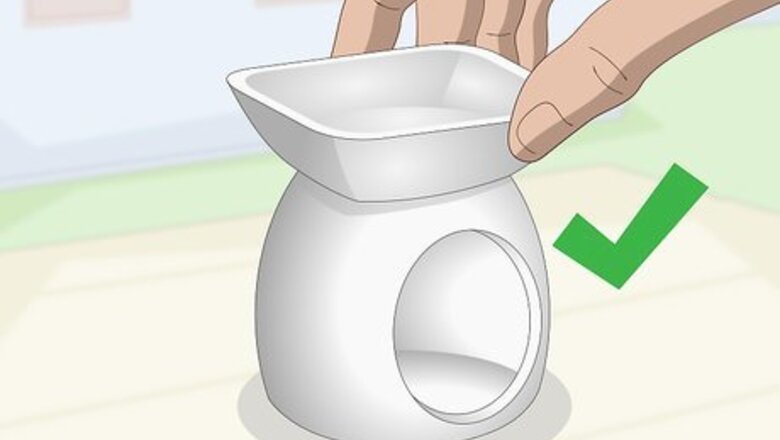
views
Using an Oil Warmer
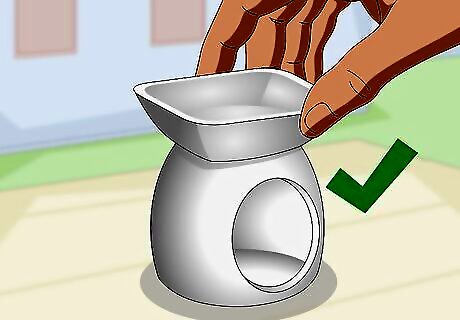
Get an aromatherapy oil warmer. There are 2 different types of oil warmers that you can use: ceramic and glass. The ceramic oil warmers are all 1 piece while the glass ones are usually a glass dish set on top of a metal or ceramic stand. You can purchase these in just about any store that sells candles and candle stands. The ceramic oil warmers are typically labeled for wax cubes or wax melts, but they will still work. The set up is still the same.
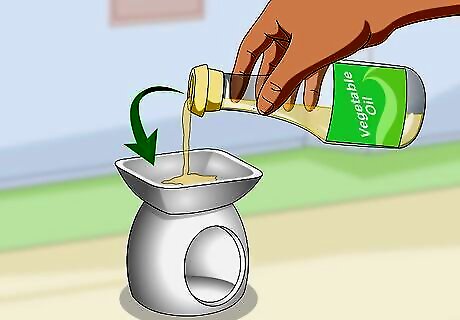
Pour a small amount of vegetable oil into the dish. How much oil you use will depend on the size of the dish. Typically, this will be around 1 to 2 teaspoons. You want to only fill the dish a little less than halfway. You can use other types of liquid oil, such as olive oil or sunflower seed oil. These will add some fragrance to the burning incense. Vegetable oil has little to no fragrance. Thick oils, like argan, jojoba, and coconut are not good choices. Essential oils are not a good option either, because you won't smell the incense anymore. You must put some oil into the dish, otherwise you risk the dish becoming too hot and cracking. Don't use water as it will evaporate.
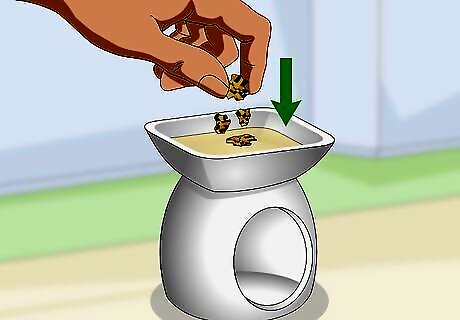
Add some resin incense into the oil. If your resin came in powdered form, you’ll need 1 small scoop, which is roughly 1 teaspoon. If it came in chunks, use a few pea-sized pieces instead. There are different types of resin incense coming from different trees, such as amber, copal, frankincense, and myrrh.
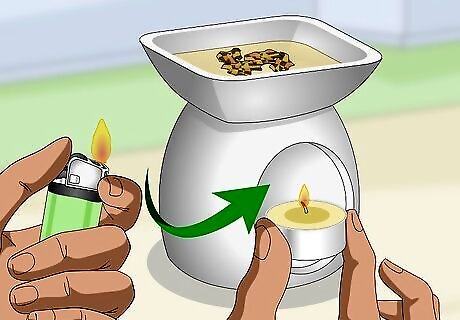
Light a tea light and put it into the oil warmer. You can put the tea light into the oil warmer first, then light it with a candle lighter instead--the long, slender pole will fit into the candle warmer. If you only have matches or regular lighters, light the tea light first, then carefully put it into the oil warmer. Don't use a votive candle. They are too tall. You need to use a tea light. Use an plain, unfragranced tea light, otherwise the aroma will mix with that of the incense.
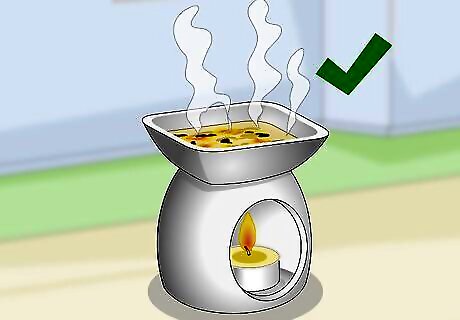
Let the oil heat up. How long this takes depends on the size of the oil warmer, what material it is made from, and how much oil you used. Typically, this will only take a few minutes, but it may take longer. As the oil heats up, the resin will heat up too and release its aroma. You'll know when the oil is hot enough once you start to smell the resin. Once the oil is hot enough, you don't need to do anything.
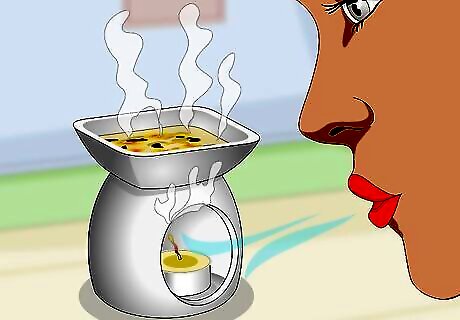
Extinguish the candle when you are done. You can also let the candle continue burning until it extinguishes itself. Most tea lights will burn for 4 hours, but you can get long-lasting ones that burn for up to 6 hours. Never leave the oil warmer unattended. Even though this method is still relatively safe, you are working with an open flame.
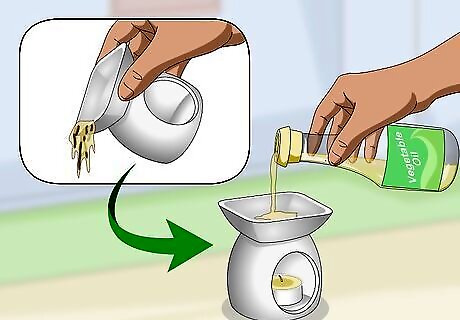
Replace the incense and oil after 3 to 4 days. If you burn the incense daily, you will need to replace it after 3 to 4 days. At this point, it would be a good idea to add more oil as well. If you aren't going to use the oil warmer for a while, empty the bowl, then wipe it clean with a paper towel. You don't have to use the incense every day. Blow out the candle and let the oil warmer cool completely before you clean it.
Making an Incense Burner
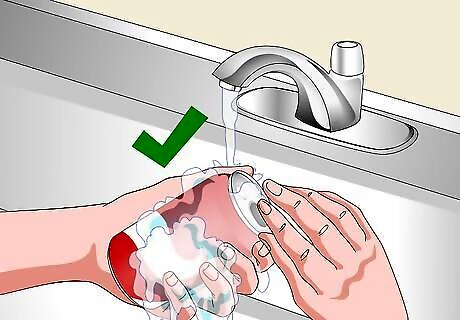
Find an empty soda can and clean it. Fill the soda can with water and 1 pump of liquid dish soap or hand soap. Slosh the water in the can, then dump it out. Rinse the can out when you are done. You can also use other types of drink cans, but be aware that they may be made from thicker metal and will be harder to cut. You need to use a drink with a bowl-shaped bottom. Do not use a regular can, like from canned beans or soup.
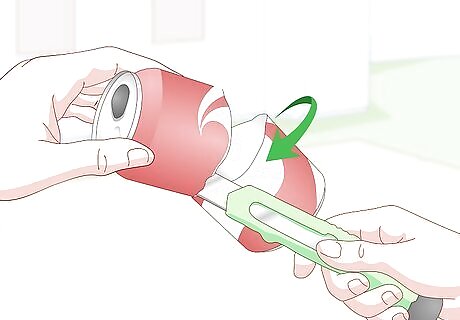
Cut the can in half with a craft blade, then discard the top half. If you need to, draw a guideline around the can first; you can also use tape or a rubber band. Try to be as neat and even as possible, otherwise the oil burner won't stand straight. It would be even better to cut the can two-thirds of the way from the bottom. This will allow you to trim the can without cutting too much off. Discard the top half of the can and keep the bottom half.
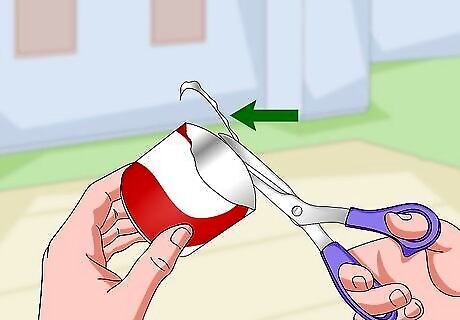
Trim off any sharp edges, then cover them with masking tape. Use scissors to cut off any sharp edges along the top edge of the bottom half of the can. Stand it upside down on a table to ensure that it sits straight, not crooked. The bottom part of the can needs to be facing up. It will become the bowl part of the oil warmer. Make sure that the can is dry on the inside. If it is damp, dry it off with a paper towel. Be careful of the sharp edges.
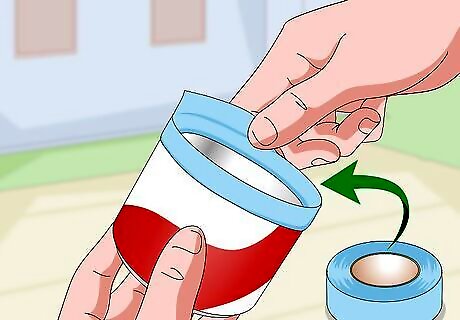
Cover the cut edge with masking tape. Wrap a strip of masking tape around the cut edge of the can. Make sure that the bottom half of the tape is on the can, and the top half is sticking out over the cut edge. Carefully fold the excess tape over the cut edge and into the can. You can use painter's tape, a narrow strip of duct tape, or even electrical tape. This tape will cover up the cut edges of the can and prevent it from accidentally cutting you.
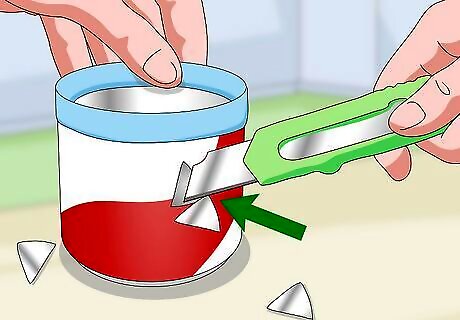
Cut 3 to 4 V-shaped holes into the sides of the can. Use a craft blade to cut 3 to 4 V-shapes into the can first; make sure that they are evenly-spaced. Next, use a pencil or skewer to poke these notches into the can and create triangular holes. It does not matter if the V-shapes are pointing up or down. Their purpose is to allow air to reach the flame and provide oxygen. The size of the V-shapes doesn't really matter, but something around ⁄2 to 1 inch (1.3 to 2.5 cm) would be ideal. Don't use your finger to poke the V-shapes into the can, or you risk cutting yourself on the sharp metal. Use a pen or a pair of closed scissors, if you have to.
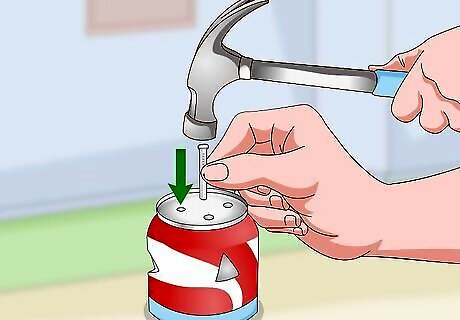
Poke some holes into the bottom of the can. Flip the can over so that you can see the bowl-shaped bottom. Make sure that it is on a stable surface, then use a nail and hammer to punch a hole in the middle of the bowl-shaped bottom. You can add 3 to 4 more holes around the first hole. Make sure that they can all fit under a tea light.
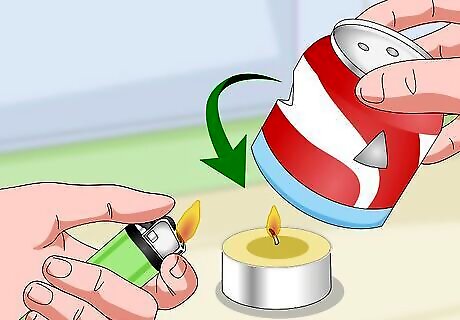
Light a tea light and set the can over it. Set a tea light on a heat-safe surface that's big enough to hold the can as well. Set the can over it so that the bowl-shaped bottom is facing up. Don't use a votive candle; it is too tall. Avoid using fragranced candles, or you won't smell the incense. The surface must be heat-safe, such as a ceramic plate. Do not use this on a wooden table or a tablecloth.
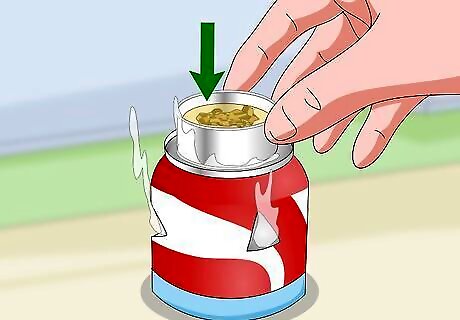
Fill an empty tea light with oil and resin, then place it over the bowl. Find a spent, empty tea light. Clear out any excess wax, then fill it no more than halfway with oil and resin. Set it over the bowl of your homemade oil warmer. Never put oil and resin directly into the bowl. Use a cooking oil, such as vegetable oil. Don't use essential oil. You can also put some foil over the bowl and make a small dip in it so that it becomes bowl-shaped but doesn't actually conform to the shape of the bowl. You can reuse this oil warmer as many times as you want, as long as it stays clean and intact. Once it gets dented, discard it and make a new one.















Comments
0 comment